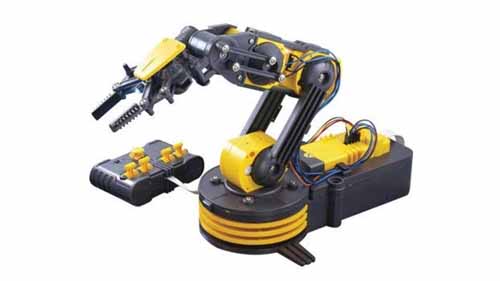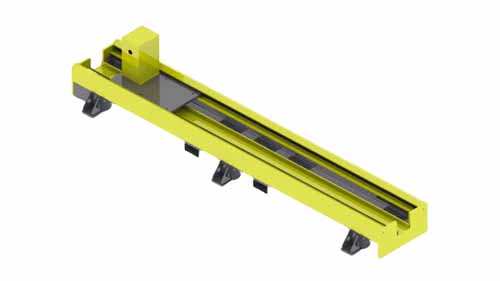
SCARA robots are one of the most common factory robot arms you’ll ever come across; every manufacturing complex that has embraced automation uses SCARA robots, and the reasons are many. For starters, they can come in any size, big or small, and they will still maintain the same level of efficiency. They are also among the fastest robots, getting things done in half the time that most of the other robot types can manage. And the biggest strength that they pack is their versatility; you can repurpose them for any type of manufacturing work any time you need to.
We are going to look at factors that influence a SCARA robot cost and how that affects their functionalities. There will also be a comparison between SCARA robots and Pick and Place robots and whether the latter, former, can be used in place of the former.
Factors That Affect the Costs of Robots

Robots are not cheap, and the cost of automating the manufacturing process can put a huge hole in your finances if you approach it without a proper plan. When you choose to go with industrial robots, the following are some of the factors you have to keep in mind.
Scope of Production
People don’t go for robots just for the sake of it; they are driven by a need that has to be met, and this comes in the form of the production scope. When the demand for your products shoots up, you have to rise to the occasion and make sure you meet it or risk losing your customers to another player in the game. Once you have determined the size of that demand, then you can go about procuring the right amount of industrial robots for the work. Having this knowledge in advance helps budget appropriately, which is way better than going in blindly.
The Size of the Robots

The bigger the robot, the more the cost of purchasing and installing. Smaller roots cost less because fewer materials have been used to make them. Bigger robots may operate with the same technology, but the sheer number of raw materials that have gone into them is enough to bump that price up significantly. Then you have the installation cost to contend with on top of having to find enough space for them.
The Software

Source: Pinterest
The software is the brain of the robot, the most important part of the entire operation, without which all you have are fancy pieces of metal. Robotic software is not the same; they go from simple industrial robot programming that handles simple tasks on the manufacturing floor to more sophisticated creations that can multitask without missing a beat. The cost of the software goes up, the more sophisticated the machine. You also have to consider the long-running costs of updates down the line to improve their efficiency.
The Brand

It would be misleading to ignore the influence that a rand has on the price of an industrial robot. The making of robots has been around for decades now, and the companies that were the first to get into the game hold the brand advantage as they are known more and are trusted because of the experience they have. This means that the older the brand, the more expensive their robots and vice versa. Although that doesn’t guarantee that they are better than the recently created brand, it is simply the dynamics of branding that affect consumption.
Accessories and Addons

How independent or dependent are the robots you are aiming for? Can they work on their own, or will they need accessories to function? These are the questions you ought to ask yourself when shopping around for robots. Some industrial robots can hold out on their own, handling their tasks without any supervision. However, there are others that cannot perform at optimum levels without the addition of other related accessories and boosters. These usually come at an extra price, and that should be factored in your plans as you deliberate on which robots to go for.
Which Costs Less: SCARA Robot Vs. Pick & Place Robot

Pick and Place robots were the standards when industrial robotic automation began making moves into the manufacturing processes. They were cheaper but were not as efficient as people may have wanted them to be. They required everything to be aligned perfectly for them to work, and this only added more work. The time it took to make all these adjustments was too long and only ended up delaying other processes. All these problems needed a solution, and that’s when SCARA robots were born.
SCARA robots are smaller, lightweight, compact, and fully automated to handle the same roles that used to be a preserve for the pick and place robotic arm. But all these improvements came at a very costly price. The initial SCARA robots that were made were so costly that having one was impossible for most manufacturers; only the very biggest names in the industry could afford it.
As time progressed, however, more improvements were made, and now there are low-cost SCARA robots in the market that can be procured for less than $10,000. They are faster, versatile, and can be used for more than just pick and place; they are capable of being repurposed for assembly, material handling, packaging, among many other roles.
So how do SCARA robots square up against Pick and Place robots? When it comes to speed, efficiency, and flexibility, SCARA robots are the better choice. They are smaller, faster, and easy to operate. This doesn’t mean that pick and place automation is no longer needed. They are very vital for the heavy lifting that is sometimes needed on the manufacturing floor. They are among the hardiest robots in the game, and their contribution to the entire process cannot be diminished based on the appearance of a better and faster option.
Why SCARA Robot Can Be an Alternative to Pick and Place Robot

As we have already established the superiority that SCARA robots hold over pick and place, it is only natural that any manufacturer interested in success and turning a good profit will go for SCARA robots. The following are some of the reasons why switching from pick and place to SCARA robots is the better move.
They are more compact with retractable robotic arms, which has reduced the amount of floor space needed to install them. Factories no longer need to rent unnecessarily huge space just to accommodate them. Another advantage that comes with their sizes is that they can be relocated to another space and re-allocated temporary tasks when the situation demands it.
Their robotic arms are lightweight, which makes their handling easy. The installation is also a breeze, and they even come with the provision of repurposing them for other roles if you have the right technicians on-site to handle that kind of modification.
They are extremely fast when it comes to movements and positioning. Cycle times have been reduced significantly, and this allows more products to be made in half the time. More products translate to more profits, and that’s what every manufacturer works towards.
They come with high-performance controllers that can be operated by just about anyone who has had rudimentary training. This increases productivity since the machines can be kept running no matter who is supervising them on the floor.
They are affordable when you consider the amount of work they can do and the many customizations that can be added. The initial cost may be a little too high, but once they are operational, it only takes a few months for all the investment to return.
They offer high repeatability with the highest accuracy you will ever find in any type of industrial robot. This creates the kind of uniformity for the products that consumers will truly appreciate.
They’re versatile. SCARA robot applications are so many and diverse; it all comes down to the needs you may have. You have the freedom to customize the robots in any way you want and repurpose them for any urgent task.
Limitations of SCARA Robots

Source: Pinterest
As perfect as they may sound, SCARA robots are not without some drawbacks; they are machines, after all. Some of the inconveniences you are bound to run into when dealing with this type of robot include the following.
They have a limited payload capacity. Their speed comes at the expense of their ability to handle huge loads, and this can be an inconvenience if you have no pick and place robots on the floor to handle that task for you. The maximum load that the average SCARA robot can handle is about 10kg which is very little when you consider the number of products that are churned out in a single day.
Despite having their prices reduced significantly, they still cost a lot. When a single SCARA robot arm retails for something close to $10,000, that only means that not every manufacturer that needs it can afford it.
The envelope found in a SCARA robot is circular, and this works against the performance of the robot. It has limited flexibility and dexterity when it comes to movements, and this makes the robot unsuitable for some tasks.
Conclusion
SCARA robots are more modern compared to a pick & place machine. Both may serve the same function, but SCARA robots easily edge out the other resoundingly. As more developments keep moving forward, it is not that hard to predict how the face of automation will be a decade from now.
For the manufacturers out there who are looking to automate their factories but haven’t made up their minds on the next steps to take, feel free to check out website and find valuable information that will enlighten you. We have a team of dedicated experts who will be glad to handle any questions you may have regarding the automation process.
